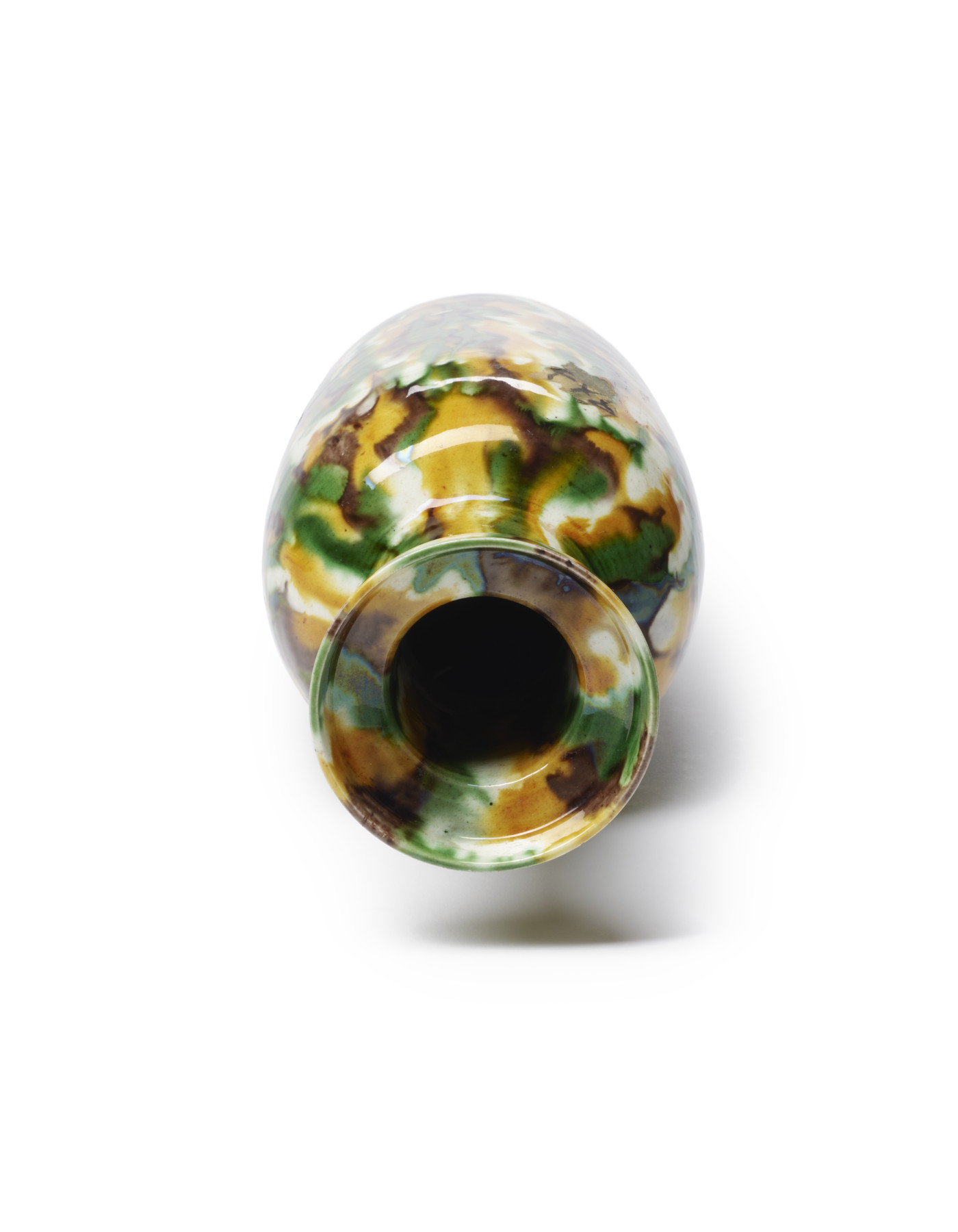Vase with Tiger Skin Glaze Pattern
The glazing pattern covering this vase reinterprets the Tang dynasty (619–907) “three color” (sancai) glaze that decorated ceramic objects and figurines of the time (see the camel and horse in the case behind you). Evoking the stripes of a tiger, the pattern is aptly named “tiger skin” (hu pi ban), and also known in English as “egg-and-spinach” due to the white, yellow, green, and purple or brown splotches.
Provenance
Provenance (from the French provenir, 'to come from/forth') is the chronology of the ownership, custody, or location of a historical object. Learn more about provenance at the Walters.
Centennial Exhibition, Philadelphia, 1876; William T. Walters, Baltimore, 1876, by purchase; Henry Walters, Baltimore, 1894, by inheritance; Walters Art Museum, 1931, by bequest.
Exhibitions
| 1876 | Centennial Exhibition Philadelphia. Memorial Hall, Philadelphia, Philadelphia. |
Geographies
China (Place of Origin)
Measurements
H: 9 1/16 × Diam: 3 15/16 in. (23 × 10 cm)
Credit Line
Acquired by William T. Walters, 1876
Accession Number
In libraries, galleries, museums, and archives, an accession number is a unique identifier assigned to each object in the collection.
In libraries, galleries, museums, and archives, an accession number is a unique identifier assigned to each object in the collection.
49.1209






